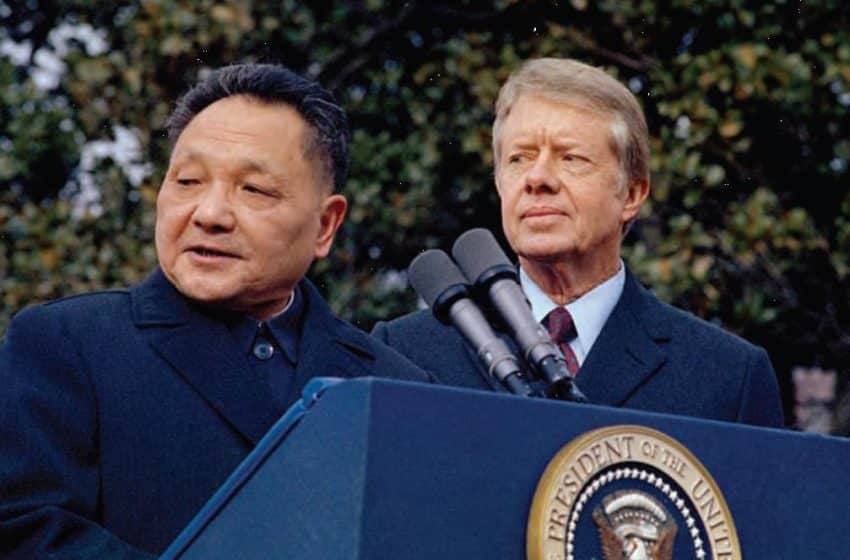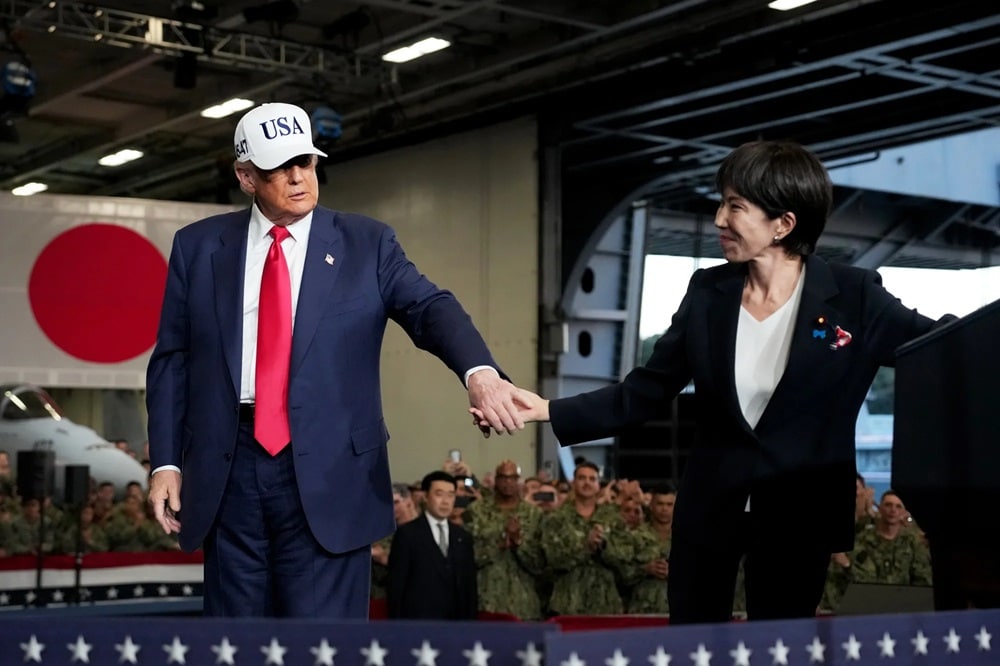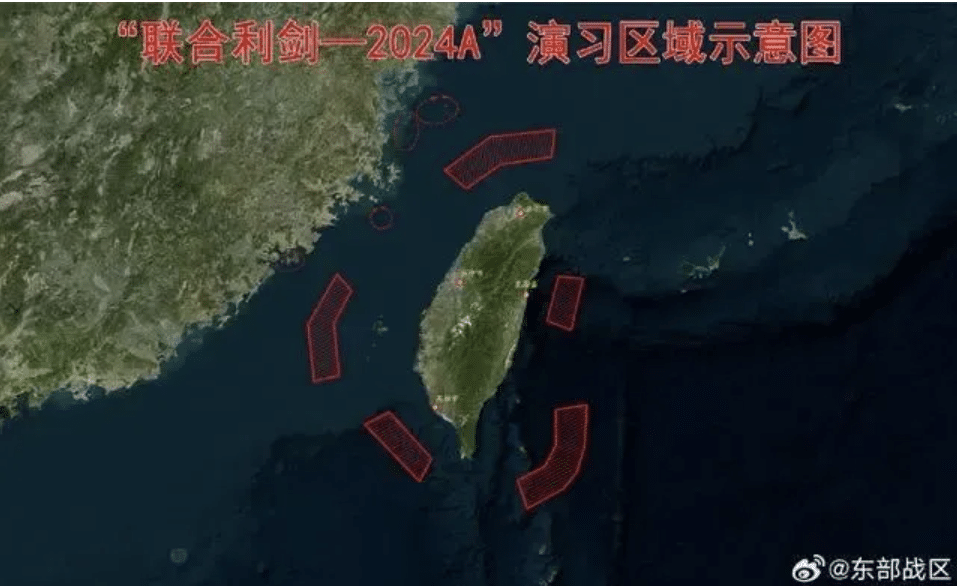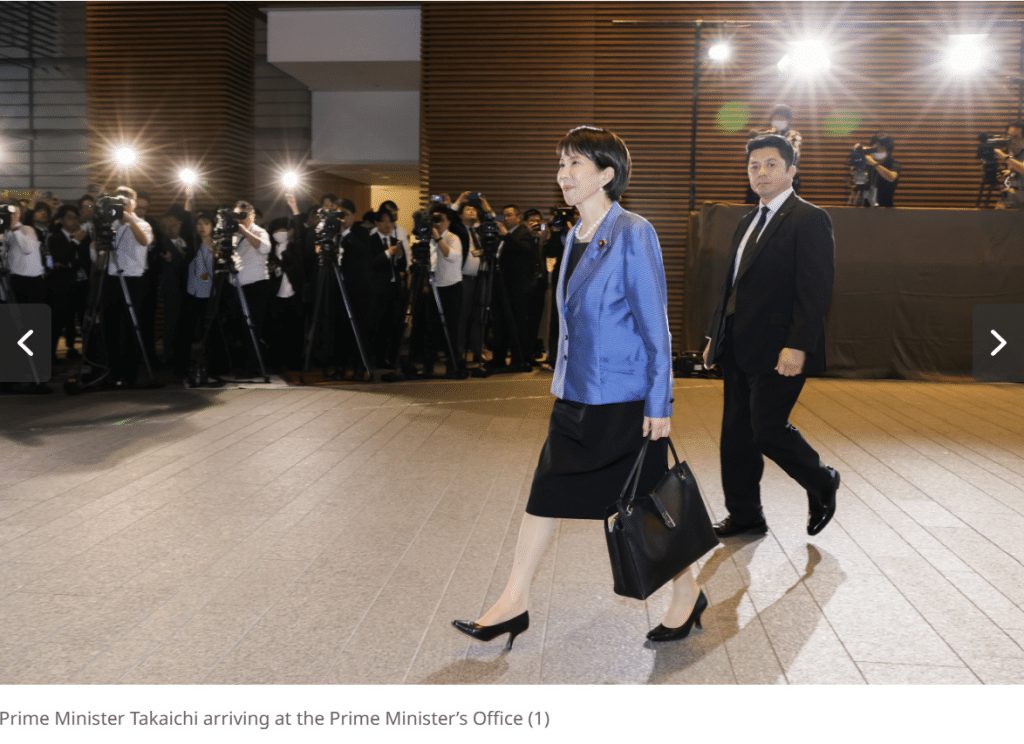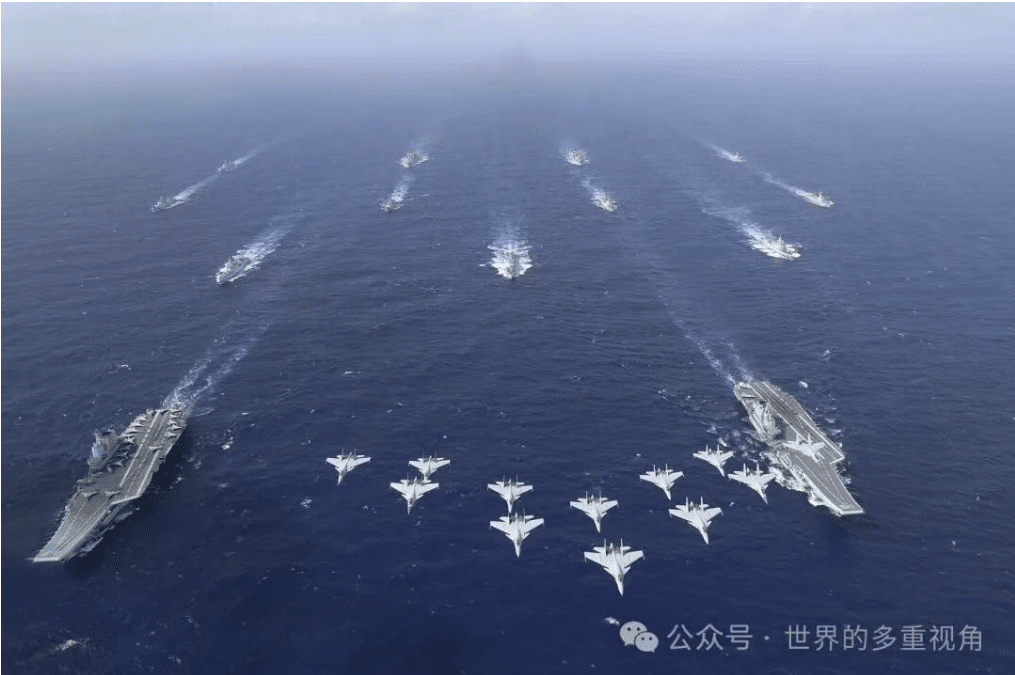How to Prevent a US-China Nuclear Confrontation
The ongoing Russian invasion of Ukraine has reminded the world of the dangers that accompany crises involving nuclear-armed states. While Moscow and Washington’s arsenals tend to dominate headlines due to their size and sophistication, the growing potential for significant Sino-American nuclear competition must not be overlooked. Although Beijing maintains a doctrine of “no first use” (NFU) and possesses a much smaller arsenal than either Washington or Moscow, its recent push to expand its arsenal speaks to the underlying mistrust between the U.S. and China. Fortunately, China’s nuclear modernization likely does not signal a shift in posture or policy. However, China’s actions speak to the dangerous underlying tensions that drive Sino-American nuclear competition and make arms control efforts so challenging. While these dynamics augur poorly for any significant breakthrough in nuclear arms control, there are still useful, practical steps that can be taken to ameliorate some of the most concerning risks surrounding potential scenarios for nuclear escalation and build a foundation upon which future progress might be possible.
China’s Arsenal and Doctrine
Historically, China has maintained a quite limited arsenal that lagged the American and Soviet/Russian forces in both quantity and technological sophistication. Unlike the United States, which has pursued a strategy of damage limitation—improving missile accuracy, investing in surveillance and reconnaissance platforms, developing techniques for tracking and eliminating enemy ballistic missile submarines, and fielding strategic missile defense systems—China has pursued a strategy of assured retaliation. Consequently, Beijing has embraced a declaratory policy of no first use and has pledged not to employ nuclear weapons against non-nuclear weapons states or in nuclear free zones. This nuclear doctrine has enabled China to adopt a relaxed approach to nuclear readiness, such as leaving its arsenal de-alerted and keeping most warheads ‘de-mated’ (in plain terms, separated) from the missiles that would deliver them. While this limits the speed with which China can retaliate and, arguably, has left the Chinese arsenal relatively vulnerable, it has also signaled to potential adversaries that China is committed to its NFU pledge.
Despite this fact, China has started expanding its arsenal quantitatively and, especially, qualitatively in the past decade. Perhaps the most notable recent development is the construction of 300 new ICBM silos in western China. Were all these silos to be filled, China would surpass Russia as having the second largest silo-based ICBM force. And if Beijing ultimately decides to deploy MIRVed (missiles that carry several nuclear warheads at once) DF-41s in these new silos, it could increase its deployed ICBM force to around 1,000 warheads. But this represents the extreme range of estimates, with most analysts expecting a more modest increase to around 450 warheads in part due to China’s limited stock of fissile material. Another reason to doubt these higher estimates is simply that massive increases in warhead production would represent a costly and wasteful use of resources when China can simply play a shell game and move missiles between silos to complicate American targeting. Regardless of the specific warhead numbers, however, the overall arsenal will emerge substantially larger than its historical average.
These efforts have been complemented by the development of new missile systems. For example, the liquid-fueled DF-4 has been almost completely phased out and replaced by the solid-fueled, road mobile DF-31. The PLARF is also beginning to replace its earlier model DF-31A brigades with the DF-31AG, which is based around an improved transporter erector launcher with enhanced off-road capabilities. Additionally, China has increasingly moved to replace its DF-21 forces with the dual-capable DF-26, which possesses over twice the range of its predecessor and is thus capable of targeting Guam.
The other major development in Chinese nuclear force structure is the growing size and sophistication of China’s ballistic missile submarine (SSBN) fleet. The current fleet of six Jin-class boats can range India, Russia, Guam, Alaska, and Hawaii, but their JL-2 SLBMs lack the range to target the continental United States. They are also significantly noisier than American and Russian SSBNs and would likely struggle to escape the first island chain without being detected and tracked by American or Japanese anti-submarine warfare (ASW) assets. Consequently, Beijing has begun construction of a follow-on class of SSBNs, the Type 096, expected to carry JL-3 SLBMs, with a range in excess of 10,000 kilometers. This would extend the reach of China’s naval nuclear arsenal to the western United States while still leaving cities on the eastern seaboard outside the range of China’s SSBNs. Despite these improvements, the submarine leg of China’s triad is likely to remain secondary for two reasons. The first is China’s unfavorable geography, which limits its submarines’ ability to undertake continuous at-sea patrols outside of small bastions near Hainan. The second is that Chinese launch authority is exclusively the prerogative of top Chinese leaders. But unlike most of China’s land-based nuclear force, SLBMs must have their warheads mated for the duration of a patrol, which creates significant command and control challenges for the Party that do not yet seem to have been fully resolved. Specifically, the requirement for submarine-based missiles to be fueled and mated reduces the degree of negative control exercised by the CMC, creating novel risks around unauthorized use or accidents that have yet to be resolved. Moreover, the introduction of a meaningful naval leg to China’s nuclear arsenal creates bureaucratic challenges regarding operational authority, with the PLAN and PLARF both potentially seeking operational control of the SLBMs and generating convoluted chains of command. While these command and control challenges are hardly insurmountable, they significantly compound the geographic and ASW challenges facing China’s SSBNs.
Despite these developments, there is little evidence that Beijing seeks to alter its NFU policy or broader nuclear doctrine. Indeed, while there is some evidence that Chinese forces are working to increase the celerity with which they could respond, potentially even adopting a posture of launch on warning, most of China’s nuclear modernization efforts suggest an emphasis on deterrence rather than nuclear warfighting. This is perhaps most evident in China’s placement of its newly constructed ICBM fields in the far west, outside the range of American cruise missiles. Similarly, China’s growing emphasis on more survivable SSBNs suggests more a concern about survivability than offensive advantage. Even China’s decision to MIRV much, if not all, of its ICBM force, while more ambiguous in the intentions it signals, is likely being done in response to concerns about American missile defense systems. Given this, it is unsurprising that China has continued to reaffirm its NFU policy in both official documents and public statements.
Of course, the scale and breadth of China’s buildup does create greater ambiguity about Beijing’s intentions. China’s increasingly sophisticated theater nuclear forces and growing use of solid fueled rockets, which can be launched far faster than their liquid fueled predecessors, grant Chinese decisionmakers a wider range of plausible nuclear options. Moreover, the growing sophistication of China’s theater nuclear weapons enables Beijing to relatively easily shift to an offensive nuclear warfighting posture in the future, should it so desire. But, as Fiona Cunningham points out, none of the major signs of a doctrinal shift are present in Beijing’s current buildup. China continues to arm its short-ranged ballistic missiles with conventional warheads, has not developed low-yield “tactical” nuclear weapons, and continues to invest launch authority exclusively with senior leaders as opposed to lower-level commanders. Consequently, it seems highly unlikely that China is seriously planning to significantly alter its declaratory policy or broader nuclear posture.
The Drivers of Force Structure and Problems of Mistrust
If China’s efforts are not part of a broader shift in posture, what explains the significant recent expansion of the Chinese nuclear arsenal? The primary impetus is Beijing’s continued fears over America’s intentions and perceived technological edge. In particular, Chinese strategists seem increasingly concerned about American counterforce and ballistic missile defense (BMD) systems, which they allege to represent an American attempt to achieve “absolute security” by eliminating China’s ability to assure retaliation. The American nuclear modernization program is an important element in China’s calculus because, although it does not quantitatively grow the size of the American arsenal, it develops new delivery systems such as a new stealthy, penetrating cruise missile and strategic bomber that could enhance America’s already significant counterforce capabilities. These improvements to America’s nuclear delivery systems complement further improvements in accuracy afforded by the installation of new fuses onto American warheads, increasing their kill probability against hard targets such as missile silos.
The other major concern for Beijing is Washington’s continued investment in missile defense systems like Ground-Based Midcourse Defense (GMD). This system, based around interceptors deployed in Alaska and California, is designed to intercept missiles from North Korea during their midcourse phase. Currently, this system alone is of little use against Chinese missiles because it has just under 50 interceptors and suffers a reliability rate of 55% (though in real-world conditions this would likely be much lower). Thus, Beijing’s concern probably derives from Congressional insistence that GMD be expanded and upgraded, potentially portending significant future improvements to American defenses. America’s recent successful test of the SM-3 Block IIA naval surface to air missiles to shoot down a mock ICBM likely only further exacerbated China’s fears. Despite these developments, however, it is currently impossible for the U.S. to defend against a large-scale Chinese nuclear strike. Thus, the more worrying scenario for Beijing is that BMD systems might be used in conjunction with an American first strike that eliminates the vast majority of China’s nuclear arsenal. Were the U.S. to successfully execute such an attack, China’s nuclear forces could be so degraded that even the highly unreliable GMD and small arsenal of SM-3 Block IIAs would begin to realistically possess the ability to swat down whatever remained of the Chinese arsenal.
While these fears may seem absurd from the American vantage point, they are not helped by Washington’s stubborn refusal to recognize a state of mutual vulnerability with Beijing or adopt its own NFU declaratory policy. Part of America’s unwillingness to concede on these issues is structural, given its need to extend deterrence to allies, but Washington is also concerned that altering policy now to accommodate Beijing would be to essentially offer appeasement in the face of Chinese nuclear expansion. Be that as it may, Beijing quite reasonably is opposed to any arms control negotiations until Washington accepts mutual vulnerability. In other words, Beijing seeks verbal assurance from Washington that the U.S. does not believe it can launch a nuclear attack against China without itself suffering unacceptable damage from Chinese nuclear retaliation. To willingly restrict the size and capabilities of its arsenal now, when Washington, at least officially, refuses to acknowledge that it is vulnerable to Chinese nuclear retaliation and maintains a much larger and more sophisticated arsenal, would be strategically dangerous and difficult to sell to Chinese hardliners.
Of course, it is worth noting that Beijing has itself muddied the waters in a way that is unhelpful for trust-building. For one, its NFU policy is viewed with skepticism by many in the United States, a cynicism driven in part by history (the Soviets also committed to no first use, but documents released after the fall of the USSR revealed this was an empty pledge) but primarily by Beijing’s ambiguous messaging over what would constitute first use. For example, PLA doctrinal manuals suggest that China might threaten nuclear use if key infrastructure, such as the Three Gorges Dam, is targeted even by conventional weapons. And important media personalities and retired officials have also publicly called for China’s NFU policy to potentially be revised or abandoned altogether. Beijing has also been frustratingly unclear about its missile defense concerns, frequently conflating theater missile defense with strategic missile defense. The former, comprised of systems such as THAAD, are designed to protect specific regional bases from both conventional missile strikes as well as attacks from shorter ranged nuclear weapons. Strategic missile defense, such as GMD, is employed for defense of the homeland against ICBM threats. Only the latter poses a strategically meaningful threat to China’s ability to assure retaliation, as THAAD batteries lacks the geographic coverage and burnout speed to defend targets across the continental United States from ICBMs.
China’s concerns are likely sincere, but it is also the case that Beijing’s expansive criticism of American missile defense often appears driven by fears over the implication of BMD deployments for the conventional balance. Indeed, China has repeatedly voiced frustration at the deployment of Terminal High Altitude Area Defense (THAAD) radars in the territory of South Korea because it fears these systems grant Washington a vastly enhanced picture of Chinese airspace. This may be a legitimate, though misguided, concern, but it has very little bearing on the effectiveness of China’s nuclear arsenal. Other Chinese commentators have fretted that theater missile defense systems, by virtue of their networked architecture, are entangling American allies into one integrated missile defense system, thus forcing Beijing to confront a wider array of adversaries. Again, this fear may be sincerely felt, but it has little to do with nuclear stability. Thus, it is easy to see how many American observers view Chinese complaints about missile defense as little more than a disingenuous attempt by Beijing to deliberately conflate nuclear and conventional concerns to gain an advantage on the battlefield. Unfortunately, the result is that the U.S. continues to ignore Beijing’s very legitimate fears about its long-term ability to assure retaliation, directly contributing to China’s insecurity and nuclear buildup.
The upshot is that both sides have compelling reasons to distrust the other. Beijing feels Washington’s demands that it engage in serious arms control to be unreasonable given how much smaller and less sophisticated the Chinese arsenal is compared to America’s. Moreover, given continued improvements to America’s counterforce capabilities and refusal to acknowledge mutual vulnerability with China, Beijing has good reason to worry about American intentions and fears for the long-term security of its arsenal. This is especially true if, as the Chinese do, one expects significant improvements in American missile defense capabilities to materialize in the future. For its part, the U.S. doubts the sincerity of China’s declaratory policy, especially in light of the continued expansion and modernization of China’s nuclear arsenal. It also has reason to suspect ulterior motives in China’s stated concerns around missile defense systems. Yet this mutual distrust, while understandable, creates significant risks. If both sides prove unwilling to trust the other and engage in meaningful dialogue, the chances of a nuclear crisis spiraling in a dangerous direction will continue to remain worryingly high.
Additional Reasons for Concern
The general distrust in the Sino-American nuclear relationship impedes risk reduction, but there are two additional points of concern that compound this challenge. The first results from the entangled nature of China’s ballistic missile units and command and control infrastructure. Chinese missile bases house both conventional- and nuclear-armed regiments, which would disperse over a wide area in the event of a crisis to increase survivability. But this intermingling of units increases the difficulty of discrimination, creating a small but meaningful risk that American strikes against Chinese targets during a conflict would inadvertently erode China’s nuclear arsenal, creating “use it or lose it pressures” for Beijing. This risk is only exacerbated by the fact that many of China’s radar installations and communications platforms also serve a dual-role, servicing both nuclear and conventional forces. Fortunately, the level of entanglement is not as severe as earlier analysts feared, but it is significant enough to generate concern, especially given the underlying distrust that permeates Sino-American nuclear relations.
Perhaps more concerning, though, is the significant differences in Chinese and American views on nuclear stability. Chinese officials seem to have a quite relaxed view regarding the ease with which a firebreak between conventional and nuclear conflict can be maintained. This derives in part from their belief that nuclear use will escalate uncontrollably, making it irrational, and in part from their conviction that the U.S. will shy away from any military action that could precipitate nuclear use. But the opacity of China’s force, coupled with lingering American doubts about the credibility of China’s NFU pledge, augur a far more precarious situation. For example, authoritative Chinese nuclear doctrine envisages potentially firing an ICBM armed with a conventional warhead at the continental United States during a crisis as a signal of resolve. But this action could easily be misperceived by American decisionmakers as a nuclear strike, precipitating the very escalation China’s show of strength is supposed to deter. More broadly, China and the United States lack the history of nuclear crises and close calls that peppered the Cold War standoff between the Soviet Union and United States. Consequently, China and the U.S. lack a shared understanding of these crisis dynamics, and Chinese leaders in particular, given their lack of experience with nuclear crises, are likely overestimating their ability to manage and control them. Without serious dialogue and attempts at mutual understanding, this Pollyannish approach to nuclear escalation management is likely to persist.
Achieving Progress
As the above section suggests, the current trajectory of Sino-American nuclear relations is worrisome. China’s nuclear buildup is occurring concurrently with America’s modernization of its nuclear triad, with both sides perceiving aggressive intentions in the other’s actions. One way to mitigate these fears would be to pursue deep arms control. Unfortunately, this solution is likely infeasible for several reasons. The first hurdle is structural. Unlike the Cold War, which occurred in an environment dominated by two nuclear powers vastly more powerful than any others, the current nuclear balance is increasingly tripolar. The U.S. is forced to worry about both Russia and China when making calculations about force structure and declaratory policy, and this added complexity complicates bilateral arms deals. Indeed, part of the reason the U.S. was so eager to scrap the INF Treaty (besides Moscow’s flagrant violation of its terms) was that remaining a party to the deal limited Washington’s ability to develop the type of intermediate-range missiles so useful for scenarios in the vast Western Pacific. The problem becomes even more acute if Beijing and Moscow continue to signal greater political alignment between them. While China faces slightly less complex nuclear calculations, it too must contend with Russian and Indian nuclear forces in addition to the American arsenal.
Beyond the structural issues posed by the increasingly complex mix of relevant nuclear actors, many of the aforementioned challenges with mistrust create barriers to arms control. With its significantly smaller arsenal, Beijing has little incentive to limit its nuclear forces and thus risk permanently locking in an American advantage, especially given Chinese concerns that the U.S. is pursuing nuclear primacy. Even more limited agreements, such as the creation of mechanisms to enhance transparency over future force structure plans, are unlikely to be achievable given China’s belief that opacity is key to ensuring the security of its relatively more vulnerable arsenal. The U.S. is also constrained in what it can offer given its global security commitments and the demanding requirements associated with extending nuclear deterrence to such a large number of allied countries. It is for exactly this reason that Washington has pursued a strategy of damage limitation through BMD and counterforce targeting, as it needed to render credible its commitment to retaliate on behalf of allies. This concern about allied perception is also part of the reason behind Washington’s refusal to acknowledge mutual vulnerability with China, as it fears doing so would embolden China and frighten allies who might come to believe that Beijing now possessed the ability to deter American intervention. In addition, allies have different fears regarding Chinese nuclear force development, with even theater-range forces posing a potentially existential threat to Canberra and Tokyo in a way that they do not to the continental United States. Accommodating these allied concerns only further ties Washington’s hands.
However, the barriers to deep arms control do not preclude all forms of cooperation. For one, there is significant scope for enhanced dialogue at both the Track-1.5 level as well as at the official level. The goal of these increased interactions should be to enhance understanding about both sides’ positions and concerns, thus minimizing misunderstandings and, hopefully, creating the impetus for iterative progress on arms control and risk reduction. Of particular value are conversations that enhance the strategic literacy of both sides. As noted previously, both Chinese and American strategists often adopt strong assumptions about the other side’s intentions, but these views do not always comport with the other side’s self-image. While these misunderstandings are impossible to eliminate entirely, enabling low-stakes conversations might create better shared understanding and allow both sides to better translate the other’s signals. This kind of dialogue is far from a panacea, but it would represent an important first step by creating a forum in which issues can be regularly discussed and trust enhanced. Until 2019, there was a regular Track-1.5 dialogue between the U.S. and China run by the Pacific Forum, but China has ended its participation in recent years. Resuscitating this kind of institutionalized but informal interaction would represent an excellent first step, as the unofficial nature of Track-1.5 talks permits more casual and sincere dialogue and trust-building.
While there is a precedent for Track-1.5 talks, to date there has been no regularly-scheduled official level nuclear dialogue between the U.S. and China. Creating such a forum would be helpful for addressing existing challenges as well as potentially laying the groundwork for more substantial agreements on arms control and risk reduction. Although it is unlikely that either side will currently be willing to concede on issues such as arsenal transparency or declarations of mutual vulnerability, the odds of future progress rise if Beijing and Washington can at least begin a regular conversation at the official level.
Conclusion
In short, there are reasons for both optimism and pessimism. Despite its buildup, China seems unlikely to be racing for parity with the U.S. and seems uninterested in altering its declaratory policy or nuclear doctrine. This limits the risk of an uncontrolled arms race. Additionally, there are still many low-hanging fruit available to both sides. Simple steps such as the development of regular forums for dialogue would go a long way in reducing inadvertent escalation risks and building trust. Unfortunately, the more substantive arms control agreements needed to significantly improve crisis stability and reduce nuclear antagonism are likely not possible at the moment. The goal should be to realize limited gains now with the hope that they may eventually spill up to broader successes in the future. But tying progress to a nuclear grand bargain is unlikely to bear fruit and liable to end in mutual recriminations and the empowerment of more hawkish voices on both sides.


